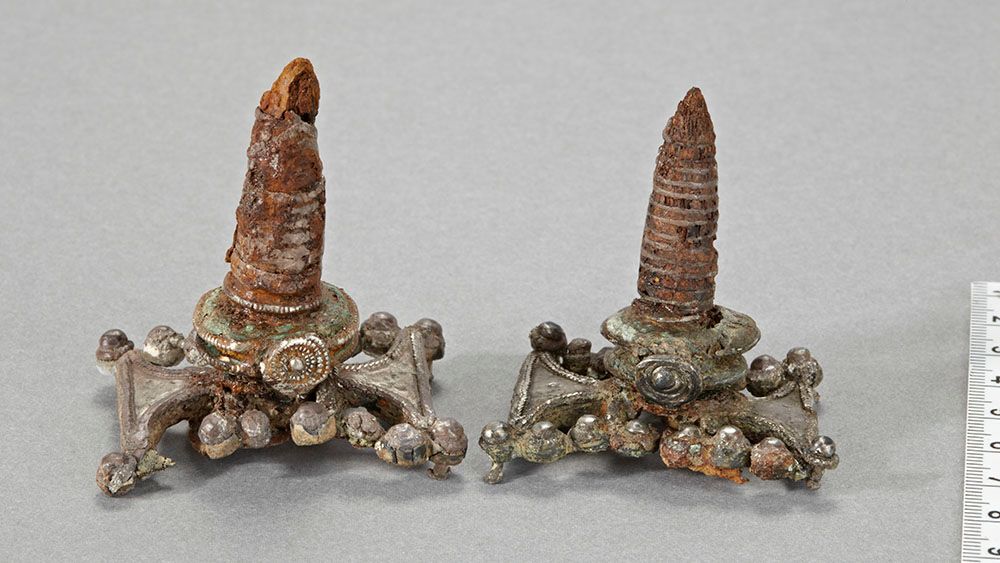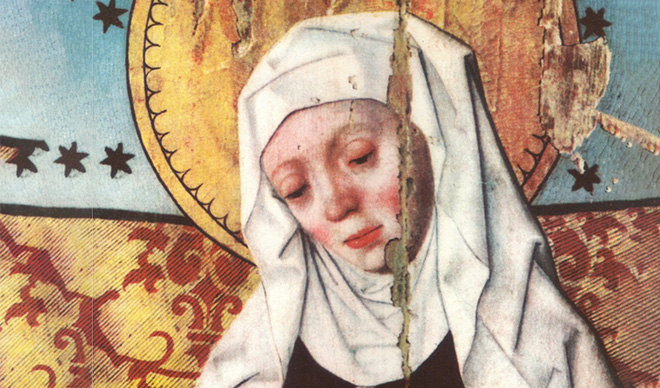The Middle Ages were not all about tyrannical rulers and power struggles. Cooperation, compromise and women in power were also common, according to historian at the University of Oslo.

WOMEN INHERITED POWER: Here, the lords of Brittany acknowledge the duke and duchess. The image is from the chronicles of Froissant, 15th century.
Photo: Wikimedia Commons.
When historian Erika Graham-Goering checked the number of women who were in power worldwide five years ago, she was surprised. The proportion was the same as it was in France in the 14th century: one in five.
Graham-Goering's area of expertise is power, who held it, and how it was exercised in the late Middle Ages. She focuses particularly on France in the 14th century, a period that constitutes the first half of the Hundred Years' War (1337-1453).
"For historians, it often seems that you either research women in the Middle Ages or you research the upper class and the power elite. I believe these topics are interconnected and cannot be separated because women had considerable influence," Graham-Goering says.
Local self-governance and different languages
In the early 14th century, the monarchy belonged to the "House of Valois", which ruled from their seat in Paris from 1328 to 1589. The map of France looked different than it does today; for example, the eastern part was under the rule of the Holy Roman Empire.

"Paris has been so successful in taking over the French national history that the importance of local and regional power is overlooked," says the historian, emphasising that the era was characterised by diversity.
"Some areas were directly under the king, while others had a lot of self-governance. Not only different dialects but also different languages were spoken throughout the country."
The king's power increased during the Hundred Years' War
The French kingdom was hierarchical and feudal, which was common in Western Europe during the Middle Ages. Most political, economic, and even military power was in the hands of the aristocracy, where positions were inherited. Farmers typically did not own land themselves but were tenants working for the local lord.
"France was one of the most populous countries in Europe, with 15 million inhabitants."
The country was at war with England during the Hundred Years' War (c. 1337-1453).
"During this period, the monarchy in Paris strengthened, and the idea of France as a nation began to take hold. There is nothing better than an external enemy for a king who desires power," Graham-Goering says.
The king was regarded as sacred, possessing supernatural abilities.
Had to be able to negotiate
Graham-Goering focuses on how society was organised. An important finding is that the exercise of power was much less authoritarian and more productive than the impression created in later times. It was about finding practical solutions to situations that arose in the moment.
"It is true that the ruling elites fought for power and control. But compromises and peaceful negotiations to reach agreements were equally important."
For the local elites to maintain power, they had to be flexible and adapt to conflicting demands: from the monarchy, from other principalities, and to some extent from the people.
"Co-lordship", meaning that two or more lords shared power in the same area, was a common form of governance throughout the country.
"Historians have long assumed that such fragmentation of power was disadvantageous. Instead, I have concluded that it led to fewer conflicts and better cooperation. For the peasants, it was beneficial to have more players to negotiate with, and for the lords themselves, it allowed for more political and economic flexibility."
The record is a village where as many as 20 lords shared power. The one with the least ownership only held 1/400 of the land.
The local lord most important for ordinary people
Power and land ownership went hand in hand.
A powerful lord had a lot of land and also power over the people who lived there. In some smaller places, the only thing that might distinguish the lord from the average farmer was the ability to afford a two-story house.
"What does power look like for the ordinary woman and man living in a village?"
"The local lord had a lot of influence. But it was not without limitations; they couldn't just make new laws and rules, or, for example, decide that someone should be executed."
Laws and regulations were based on customs, and much of it was about finding practical solutions to everyday occurrences. "Your pig went onto the neighbour's property and ate the carrots, what do we do about it?"
The king began to demand taxes
The local lords could collect taxes, but only in exceptional cases, such as during war and other crises. The idea was that they should manage with the income from the land they owned. This changed in the 15th century when a system of regular tax collection was established, and taxes were paid to the king.

"An important point, even when it came to taxation, is that although there was no democracy, a lot still depended on collaboration and negotiations. If the king wanted the local lords and dukes to collect taxes, he relied on their goodwill."
There were only 4,000 people working in the king's administration, while the total population was 15 million. Therefore, the king needed the loyalty of the local lords and often granted them significant autonomy over their areas.
Women and men had similar roles
Graham-Goering's research is largely based on original archival materials, such as letters, charters, accounts, and legal texts. One of her sources is Christine de Pizan (1364-1430), known as Europe's first paid female writer.
"De Pizan writes about leading women in the aristocracy and how it was expected that they could do pretty much the same things as men. They needed to know everything from laws and regulations to how to lead an army."
In Brittany, for example, it was Jeanne de Penthièvre who held power. She was 15 years old when she became Duchess of Brittany after inheriting the position from her uncle. She and her husband waged a war that lasted 24 years for her to retain her position.
"Women were somewhat more vulnerable to coups, but nonetheless, one in five of those in power were women. When Jeanne married, she remained the legitimate owner of the land."
Noblemen and women performed many of the same leadership tasks, although few women went to war. An important exception here is Joan of Arc (1412-1431), now a saint in the Catholic Church. For a period during the Hundred Years' War, she led the French army in the war against England.
"It's a thought-provoking fact that women lost power after the French Revolution and the introduction of democracy. They could neither be elected nor vote themselves. Whereas when positions were inherited, they actually had a reasonably good chance of being at the top of the hierarchy and in power," Graham-Goering concludes.
Translated by Kine Bjørnstad Petersen using GPT UiO.









